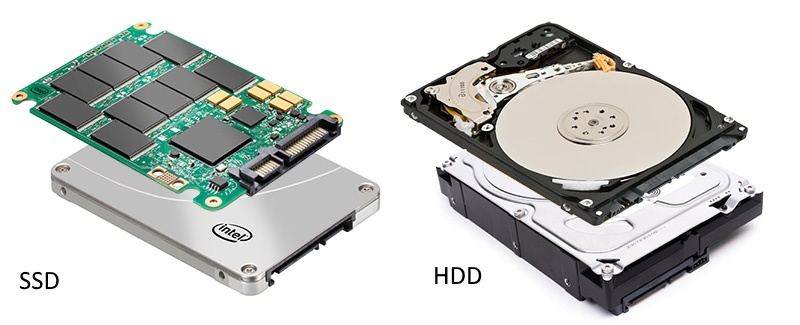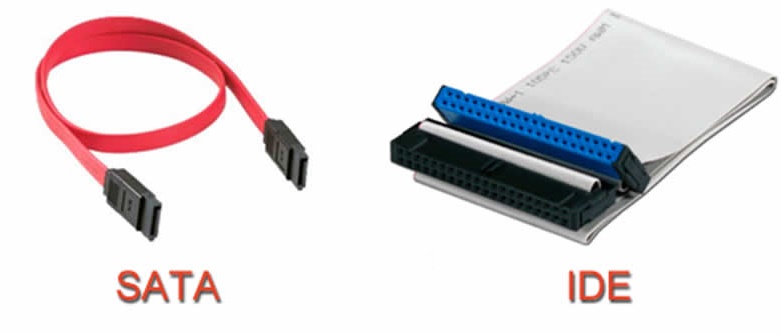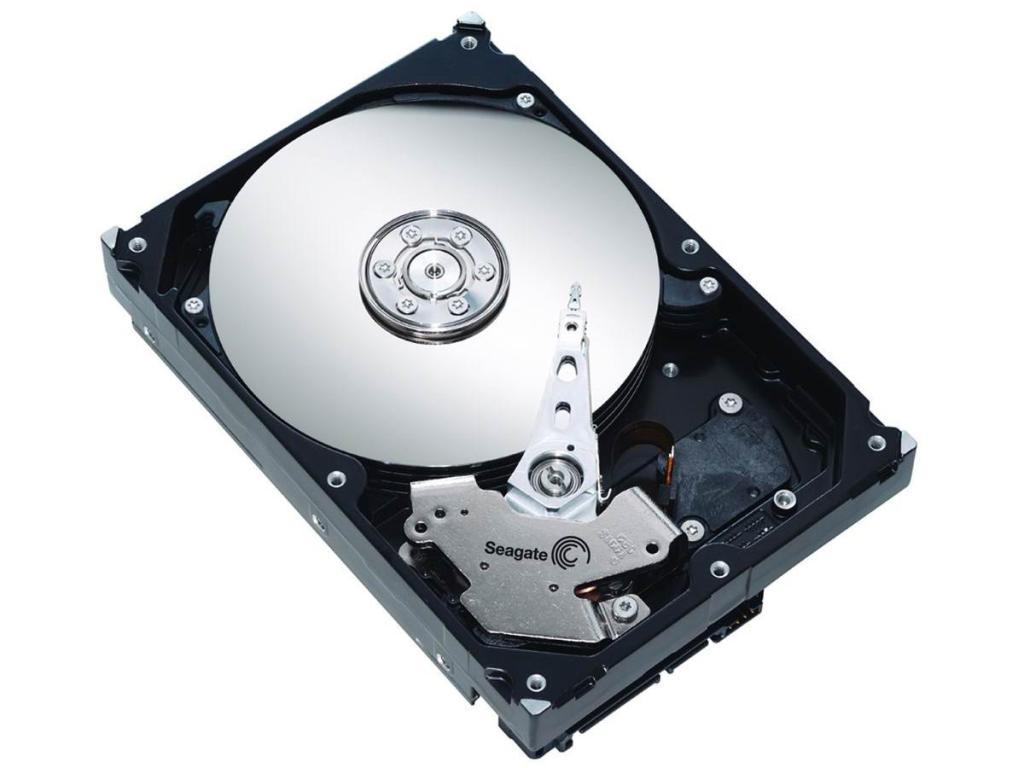How to choose a hard drive for a computer
HDD or SSD

HDD (Hard Disc Drive) - the most common type of hard drives. These are traditional magnetic drives in which the “pancakes” with information recorded on them rotate. It is this mobility that leads to various problems like the appearance of broken sectors after a mechanical impact on the body of a working disk or a sudden power outage.
SSD (Solid-state Drive) is a new type of hard disk drive that uses write technology similar to that used in flash drives. Nothing moves in them, so the risk of bad sectors appearing is rather small. However, SSDs are characterized by a very high price and short lifespan caused by a limited number of rewriting cycles. But on the other hand, such disks work very fast (their read / write speed is higher than that of the HDD) and do not need defragmentation.
Thus, the following advantages of HDD over SSD can be highlighted:
- Low price, especially in relation to the "ruble per gigabyte";
- The long operational period which under observance of all conditions can be several years.
- High read and write speed;
- No need to defragment;
- The speed of access to files (especially when reading / writing random sectors) does not decrease over time.
Physical size - 3.5 or 2.5 inches
Winchesters are available in two formats - 3.5-inch and 2.5-inch. The former are intended for use in system units, the latter are usually inserted into laptops and external hard drives.
Technically, you can install a notebook hard drive in the system unit. However, this is not worth it. Skids in the case, which fix the hard drive, protect it from vibration.
Bus type - IDE or SATA

Immediately it is worth mentioning that the IDE bus is now practically not used. It is equipped only with very old computers and motherboards. However, on the "machines" that were released until about 2008-2010, it is this standard that is used, but there is simply no SATA connector.
In modern configurations, SATA is used. It provides a higher data transfer rate (up to 6 Gbit / s).
It is worth considering that these connectors are not interchangeable. That is, it will not be possible to connect an IDE disk to a computer that has slots only for SATA, and vice versa.With urgent need, you can use special adapters, but they greatly reduce the speed and work stability does not differ.
Tire generation
SATA bus exists in several generations (revisions). They are cross-compatible, so you can connect a SATA 1 hard drive to a motherboard equipped with a SATA 3 slot. However, it is worth remembering that the data transfer speed will be what is supported by the older standard.
That is, if you install a SATA 3 hard drive on a motherboard that supports only SATA 1, the data transfer rate will correspond to the SATA 1 speed.
Similarly, if you connect a SATA 2 hard drive to a motherboard with SATA 3, the transfer rate will correspond to the speed of SATA 2.
The best solution is to use the hard drive of the standard and generation, which is supported by the motherboard.
Drive rotation speed
HDD-type hard drives use special magnetic drives (“pancakes”) to store information. In the course of their work, they rotate, and the read and write heads read and write data on them.
The speed of rotation of drives directly affects the performance of the hard disk. The higher it is, the faster the hard drive will be able to find stored information or free space to write a new one. Most modern railway models have a rotation speed of 7200 revolutions per minute, which corresponds to a search time of 8.5 ms, and a total response delay of 12.7 ms.
There are faster railways. For example, WD Raptor has a rotation speed of 10,000 rpm. The search time for this device is 5.5 ms, and the total delay is 8.5 ms. At Seagate Cheetah, at a speed of 15,000 revolutions per minute, the search time is 3.8 ms, and the total delay is 5.8 ms.
The parameter “total delay” is made up of the search time and the time that the hard disk needs to unwind the drives.
It is worth considering that the rotation speed determines the search time. If it is necessary to read information from a large, sequential data block, disks with different values of this parameter work approximately equally. Therefore, it is recommended to regularly defragment your hard drive.
Capacity

Capacity, which is measured in GB or TB, is important primarily for the user. It determines how much information can be stored on the hard disk.
However, it is not recommended to take very cheap models of small capacity. First, the Windows operating system "selects" for its needs 20-30 GB, and this volume over time only increases due to the appearance of new files. Secondly, even a web browser with active use of the week can "eat off" 1 GB. Finally, the paging file is located on the hard disk.
In addition, the higher the hard disk, the lower the cost of 1 GB. Therefore, for example, 750 GB and 1 TB drives differ slightly in price.
Buffer memory
Buffer, or cache - a kind of RAM. Unless it is used exclusively in the hard disk. In it, the hard drive stores various data that it reads from magnetic drives. Also there is information that most often requires access.
Therefore, the higher the cache size, the faster the HDD works. But this is only in theory. In practice, it turns out that there is no fundamental difference between models with 32 MB of cache and 64 MB of cache. Therefore, it makes no sense to choose HDDs with a maximum buffer - it is enough that it is simply large (16 or 32 MB for desktop configurations and 8 or 16 MB for laptops).
Heating temperature and power consumption
Like any other component of the computer, the hard disk drive heats up during operation. With a significant increase in temperature, it may cease to function normally, which will lead to the emergence of broken or unreadable sectors.
The heating is especially strong in configurations where several hard drives are used at once. The solution to this problem will be the installation of another cooler in the case, which will blow the array of hard drives.
If there is no space in the case for an additional cooler, then the solution will be hard drives with a low level of heating and power consumption. But it is worth remembering that their performance is also not too great.
Summary
When choosing a hard drive, you should first of all pay attention to the characteristics of the computer's motherboard - connection standard, generation, etc.
You should not save money by choosing very cheap models with a low drive rotation speed or a small cache size. Very expensive, too, in most cases are not needed.
In the following articles, our experts tell how to choose an SSD drive and secrets selection of RAM for computer.
Attention! This material is the subjective opinion of the authors of the project and is not a guide to purchase.







